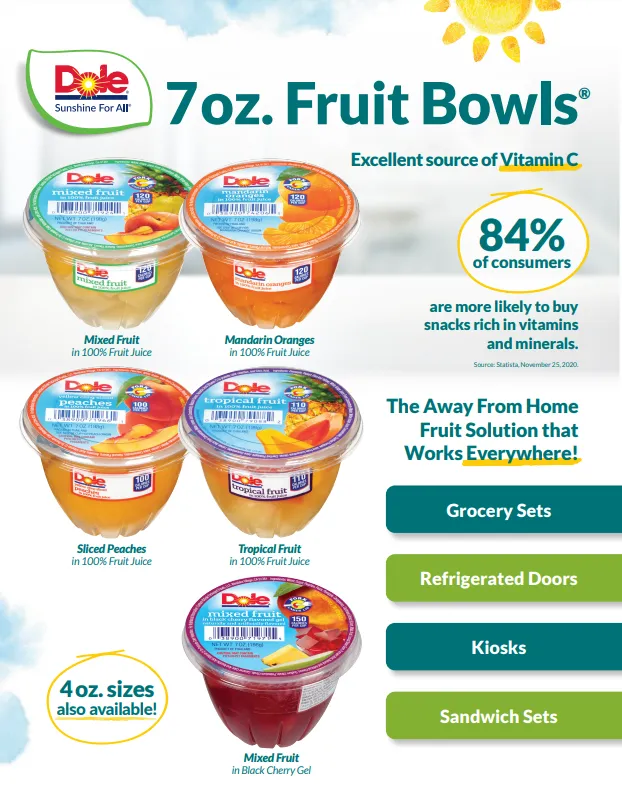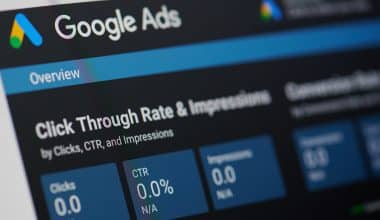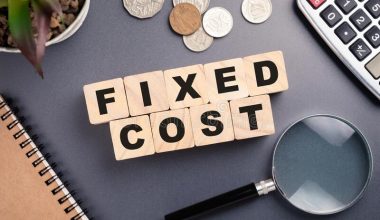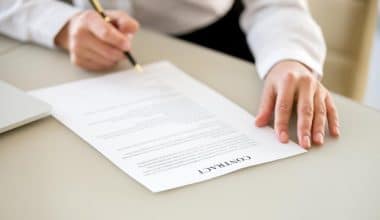Is it a sell sheet or a sale sheet? If you’re new to the world of sales, you might be a bit confused as to which one is it, or maybe if there is a difference. However, if you’ve been in sales for any length of time, you will know it’s the same and probably have even heard of numerous other names like selling sheet, sell sheet, or a sales flyer.
Tightly designed and high-quality, these documents are used to inform potential customers about your business or specific new products or services. Company representatives also sometimes use them as promotional sales aids.
Today, we’re going to take a closer look at sell sheets. I will explain what they are and why they matter, and I will also provide templates to help you create your own.
Key takeaways
A sell sheet is a one-page document that concisely details how your product or service solves a specific problem.
It is a single-page advertisement or brochure that should be visually compelling, neatly formatted, and persuasively worded.
There should also be a definitive call to action for interested prospects.
A sell sheet offers a variety of benefits, like helping with your sales pitch and standardizing information in your company.
What is a sell sheet?
A sell sheet is a physical version of an elevator pitch. Sometimes referred to as a “one page,” it concisely explains your product or service and how it solves a problem. It captures the essence of your brand‘s identity and your product’s purpose. It’s often distributed to prospects through the mail, via email, or at actual meetings.
A sell sheet is a physical first impression. It should be visually enticing, easy to read, to the point, and contain a direct call to action.
Your sell sheet is your first impression to many of your prospects. On the one hand, this is advantageous because you have full control over the information going out to potential buyers. On the other hand, this means a poor sell sheet can turn prospects away when they might be the ideal customer to benefit from your product or service.
Creating a sell sheet that is concise and compelling is a fine balance of design, copy, and marketing. It’s not easy to achieve, but getting it right can lead to substantial profits.
Types of sell sheets
Let’s take a look at some types of sell sheets your business may want to create:
Business sell sheet
A business sell sheet — sometimes also known as a company sell sheet — is a more refined version of your full company brochure. Where your brochure may give an overview of your business as a whole — going into detail about each area of your company — a business sell sheet is a condensed version that is easier to scan. It mentions the company making the product or offering the service, but doesn’t focus on it.
Business sell sheets are ideal for newer or established companies that provide only a single product or service. They can also pre-address common sales objections. They are designed to focus on a specific aspect of your business, such as:
- Your products
- Company history
- “About” your business
- Industries you serve
- Client reviews/testimonials.
This can be used for B2B and B2C.
It’s common for businesses to create a business sell sheet to gain interest from potential buyers who may still be skeptical about choosing the company. The sell sheet is designed to inform and persuade buyers as to why they should use your business.
Product sell sheet
A product selling sheet, on the other hand, is more specific than a business selling sheet. This is because it’s created to give potential buyers a deeper insight into a specific product or range that your business offers. It focuses on the business itself, with some mention of the products or services it provides.
These sheets are excellent introductions that can include information on the company’s statistics, mission, and leaders. They allow buyers to learn more about your products and can be a precursor to sending them a full-fledged sales proposal.
Product sell sheets typically include information like:
- Product features
- Pricing
- Benefits of using the product
- When the product was first brought to market
- Product reviews.
This may help prospects make their decision when it comes to buying a product from your company.
Both product and company sell sheets are very similar in terms of goals (simplicity, clarity, and incentive), and also feature the same basic design concepts. However, they differ in focus.
Service sell sheet
Like product sell sheets, service sheets are focused on presenting specific information. This time it’s about the services that a company can offer. This may include information such as the customer care offered to clients or a look into exactly what your services entail.
A service sell sheet may include information such as:
- Service benefits that come with choosing your business
- Client onboarding information
This may be particularly applicable if you offer an ongoing service to your clients. For instance, if you sell hardware to other businesses, you are responsible for ensuring it is in good working order. So you may offer a quarterly maintenance service for customers.
Sell sheet design
There are endless ways you can design a sell sheet, but a great sheet must always contain three fundamental elements: strong imagery, persuasive copy, and a simple call to action.
Let’s look at each element in more detail:
Strong imagery
Today’s audiences only read about 20% of the text put in front of them if there are text blocks of more than 600 words. This is what makes an eye-catching image more effective in promoting your product or business than a big chunk of text.
All sell sheets will need some form of imagery, but these are a few graphics I recommend your marketing team pay close attention to:
- Logo: While your company logo is critical to your branding, it’s not necessarily your strongest image. Logo prominence is key when your logo is recognizable, but if you’re a relatively new company, keep your logo small. It can be there without being the focal point.
Read: BUSINESS LOGO: How to Create One, Examples & Types of Business Logo
- Product photo(s) or illustration(s): If you’re creating a product sheet, the most prominent item on your page should be an image of your product. Whether it’s a photo or a drawing, an image of your product in action will always be the top selling point for a customer. Don’t use text to tell your prospects what your product does—use an image that shows them.
Persuasive copy
As I mentioned earlier, a sell sheet is a physical version of an elevator pitch. This means a limited word count, which makes it essential to choose every word carefully. Your prospects don’t want to know about your product, so you must let them know why your product would be beneficial to them.
In thirty seconds or less.
For instance, if I’m selling a new model of a heavy-duty backpack, and I want to promote durability, lightweight material, and comfortable straps. There are two ways I could do this:
- Our heavy-duty backpack is durable, and lightweight, and comes with state-of-the-art straps designed for comfort. Backpack Company is dedicated to creating the best and strongest backpacks for all customers.
- Hikers and students can say goodbye to back pain with our new heavy-duty backpack. Lightweight materials and comfortable straps help keep your back straight while durable pockets mean you can feel confident in a long-term purchase.
The first promotion focuses on the product. While it’s not incorrect, it doesn’t tell the prospect why they need the backpack. No matter how many good features a product has, if all I do is simply mention them, that does nothing to explain why the consumer should go out and buy it.
The second promotion, however, focuses on the customer. While I included the same product points, this time, I have drawn the prospect to the backpack because it fixes two problems for them: back pain and replacement cost. A good promo should mention the features of the product while also addressing the specific problems those features are meant to solve.
A simple call to action
Captivating imagery and copy don’t mean anything without a call to action (CTA). A prospect may be interested in your product, but they need to know what to do next. Most people won’t take the initiative to seek out your website or find your purchase page or store location without some kind of prompting.
By providing that prompt, your CTA serves as a guiding light for customers. And the good news is that it doesn’t need to be complicated. A simple QR code or a link with a “Start your free trial” or “Get your copy” button goes a long way towards converting your prospects from interested consumers into fledgling customers rather than simply hoping they’ll realize the usefulness of your product and jump on it.
While the three elements mentioned above are fundamental, your sell sheet should also contain the following:
Your logo and product name
This might go without saying, but prospects need to know who you are and what they’re buying. Be sure to display these elements prominently. The rest of the document should reflect this branding, including your brand colors and fonts.
However, keep in mind that you only have one sheet, so you should be aware of how much space you’re taking here. Clear branding in a small package can go a very long way.
An attention-grabbing headline and intro
This aspect sets the tone for the rest of the copy. Make sure it’s concise and catchy.
Your headline could be as simple as your company slogan, but that might not be your best course of action. If you can come up with something that better captures the essence of the product itself, go with that.
Here‘s a headline from a sell sheet for Dole’s Chef Ready Frozen Fruit Cuts. It‘s direct, compellingly worded, and designed to grab attention. It captures the essence of what the product is. If I were to read only the headline, I’d still understand what the product is for.
In addition to the headline, let’s look at the design. The most descriptive words, “perfect burst” and “fruit flavor,” are the largest text and in the brightest color. This draws the audience’s eyes and reinforces the biggest benefits of the product.
An introductory paragraph can give prospects some perspective on your company’s identity, reliability, and esteemed reputation. If a prospect has never heard of you, they might be reluctant to buy from you — even if they‘re interested in the product. It can’t hurt to give some insight to calm their nerves and establish yourself as an authority in your space.
Appealing data visualization
If you‘re including hard data to back your claims and product specifications, it’s in your best interest to arrange it appealingly. Make sure your statistics are easy to make sense of, and that often means presenting them graphically.
Your sell sheet isn‘t a research paper. Prospects won’t be interested in poring over and making sense of a full page of raw data. It‘s a bite-sized picture of your product, so you’re best off presenting your data in a digestible fashion.
Sell sheet template
There‘s no be-all, end-all standard for sell sheet design. In many ways, it’s an excellent opportunity for your company to express some creativity. Still, it can be helpful to have a jumping-off point to reference and structure your sheet around.
I have attached below a template that contains the basic elements you should include in your sell sheet.
BusinessYield Sell Sheet Template
Ultimately, your sell sheet is just that — your sell sheet. There’s no strictly regimented strategy or formula that you can follow to expect incredible results. You’ll have to tailor your efforts to highlight the best parts of your product.
Benefits of creating a sell sheet
A sell sheet can offer a variety of benefits, including:
Provides information for different departments within a company
A sell sheet includes all of the information about a product that members of a company may need to know, such as the product name, size, materials, and price. It can be used as a quick reference for numerous areas, including R&D, manufacturing, and sales.
The information is uniform and concise, making it a good common reference sheet for meetings involving several departments that may not have much interaction with the product themselves.
READ: Building Flexible Organizations with Agile Organizational Charts
Empowering a company’s sales teams
When a company’s sales team has all the information about a product available to reference quickly, it can empower them to use more persuasive techniques and complete more sales. They can answer questions and address customers more confidently because they’re knowledgeable about the product.
They can easily supply a customer with relevant information by sending them a sales sheet, which can help them seem more prepared for a sales call.
Standardizing information
A sell sheet requires a company to compile all relevant product information into one location and standardize it before its sales team members send it to customers. You can use a sell sheet to streamline communication between customers and salespeople because everyone has the same information. Salespeople can more easily assist their coworkers with sales when there’s standardized information for each customer.
Customer service roles can use the sell sheet to train new hires and identify potential issues with the product or service. They can also use the information to better help users have a positive experience with the product or service.
Simplifying your sales pitch
When you’re selling with a sell sheet, you can save time by sharing it with a customer. They have access to the information about the product, which means you don’t have to explain more minor details like the dimensions or price unless they have questions. Having access to the sell sheet also allows for promising leads to contact you, which can expedite sales and let you assist more customers.
The more customers you can help, the more profit you can make through sales.
SEE: Sales Pitch: How To Write Sales Pitch (+Detailed Examples)
Tips for using a sell sheet
These are some helpful tips you can review when using a sell sheet:
- Distribute the sheet. Ensure every member of the sales team has access to the sales sheet. This can help you standardize product information and ensure everyone on the team understands the product’s key points.
- Use the sheet as a guide. Marketing teams can use the sell sheet as a guide when creating other promotional marketing materials. This can help maintain a consistent image of the product and ensure all information is accurate.
- Make the sheet available online. Sell sheets can help customers learn more about products. Many customers complete product research online, so it’s a good idea to attach the sell sheet to online pages about the product.
Conclusion on sell sheets
Having a sell sheet is a make-or-break for a company and should be treated with care. Creating an inviting, colorful, and inventive display of what you have to offer. This statement and its call to action will help you promote your brand.
So make sure your one-pager is eye-catching and informative.
Recommended Articles
- How to Drive Sales With Digital Marketing
- What Is A Sales Funnel?: How to create a sales funnel(Stages, Examples, And Strategies)
- Boosting E-Commerce Sales with SEO Tactics
- Top 5 Cold Calling Tips For Successful Sales
- 5 Tips for Shopping at Liquidation Sales









